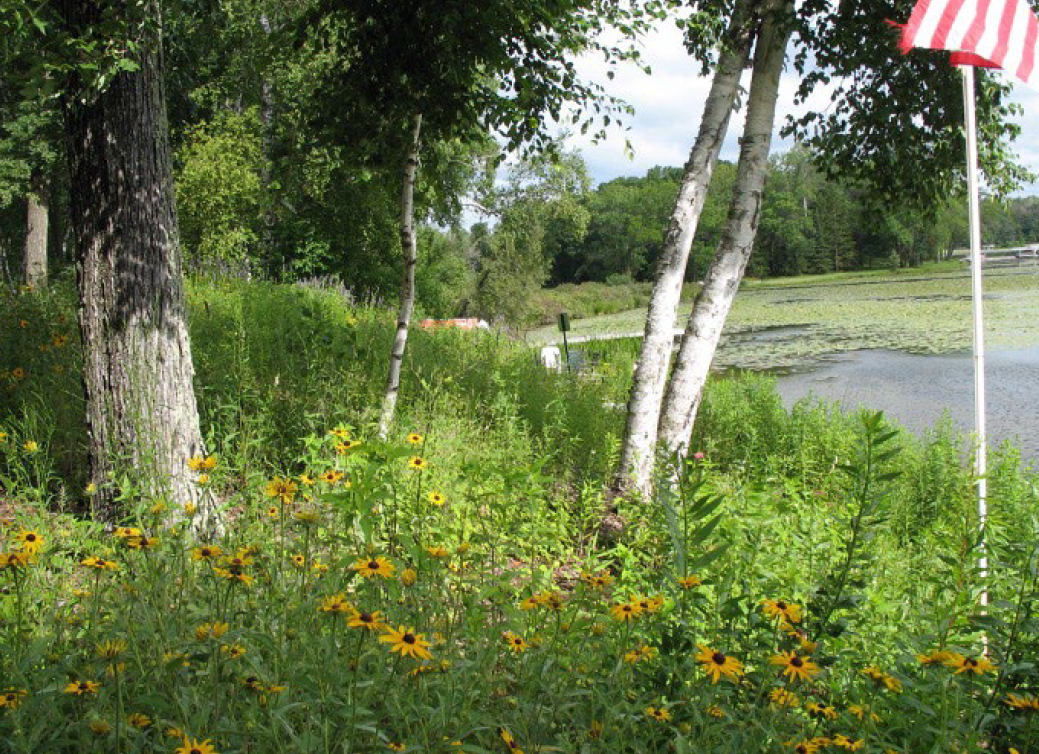
CLEAN WATER, HEALTHY HABITAT
We have been losing our natural shorelines and the health and functions they provide to water, wildlife and people. While it is relatively easy for property owners to protect natural shorelines, it is much harder to restore them once they are gone. These resources will help you get started in understanding the challenge, restoring your shore and improving the health of your lake.
Are you a Lake Steward?
Take the “Are You a Lake Steward Quiz” to see how well you are protecting Minnesota’s lakes from your own backyard – and steps you can take to improving your impact on the environment
The Lake Steward Program is a program designed for Lake Association use to encourage shoreline restoration projects among its members, and to educate about sustainable land management as it relates to water quality. Many lakeshore homeowners are unaware of the devastating effects an unnatural shoreline can have on lake health and water quality.
What Can Lakeshore Owners Do? Get Immediate Results FREE.
1. Simply stop mowing. If you mow near the shoreline, back up 25-50 ft to create a buffer zone to protect the lake. Native plants will automatically spring up within about 10 ft from the water! (if no pesticides or fertilizer is used).
2. Stop broadcast pesticides and fertilizer, often used on lawns but also as commercial mosquito spray. Save money! And more importantly, save your enjoyment of lakeshore as nesting birds return, because there will be insects for their baby birds to eat. The change is remarkable.
3. Allow dead trees or limbs that fall into the water to stay in place, if possible, to create habitat for fish and other wildlife. Less work and expense!
4. If your property already has riprap, allow native plants to grow there without any trimming. If there is impervious coverage under the rocks, such as plastic sheeting, cut into it to allow natives to emerge.
5. Check labels and refuse to buy any spot fertilizer containing phosphorus, which is present in most “organic” fertilizers (made from animal waste) and is advertised as good because it is “natural”, but it is not safe or healthy for lakes. According to Minnesota law, phosphorus-containing fertilizer cannot be applied to lawns (with some exceptions), but it is not illegal to sell it. When faced with a choice, please choose to protect our lakes.
6. Above all, resist the impulse to be neat and tidy; instead, tap into your wild side! Imagine the mystery and grandeur of natural shoreland and bring it home to your lakeshore. When lakeshore owners let native plants grow, they realize the pleasures of a whole new natural world.
Take it the next level!
Your shoreline is part of a large community which can have impacts far and wide. Maintaining or restoring your shoreline is essential for our waters health and to providing fish and wildlife habitat. This concept, often referred to as shoreland buffers or lakescaping, extends both lakeward and landward from the water's edge. Generally, a natural buffer strip at least 25 feet landward is preferred, but any unmowed or undisturbed area provides benefits.
Stearns County Soil and Water Conservation District (SWCD) are available to assist you with technical information, design, cost share, and implementation of your project. If you are interested in a shoreline erosion control project, please contact:
Greg Berg Riparian Resources Specialist
Stearns County SWCD
Phone: 320-251-7800 x 3
Direct: 320-345-6479
Email: greg.berg@mn.nacdnet.net
Lake Stewards on the Chain
These are properties on our chain that have been deemed Lake Stewards. COMNG SOON
-
Date of Project
Primary Goal
Overview
-
Date of Project
Primary Goal
Overview
-
Date of Project
Primary Goal
Overview




